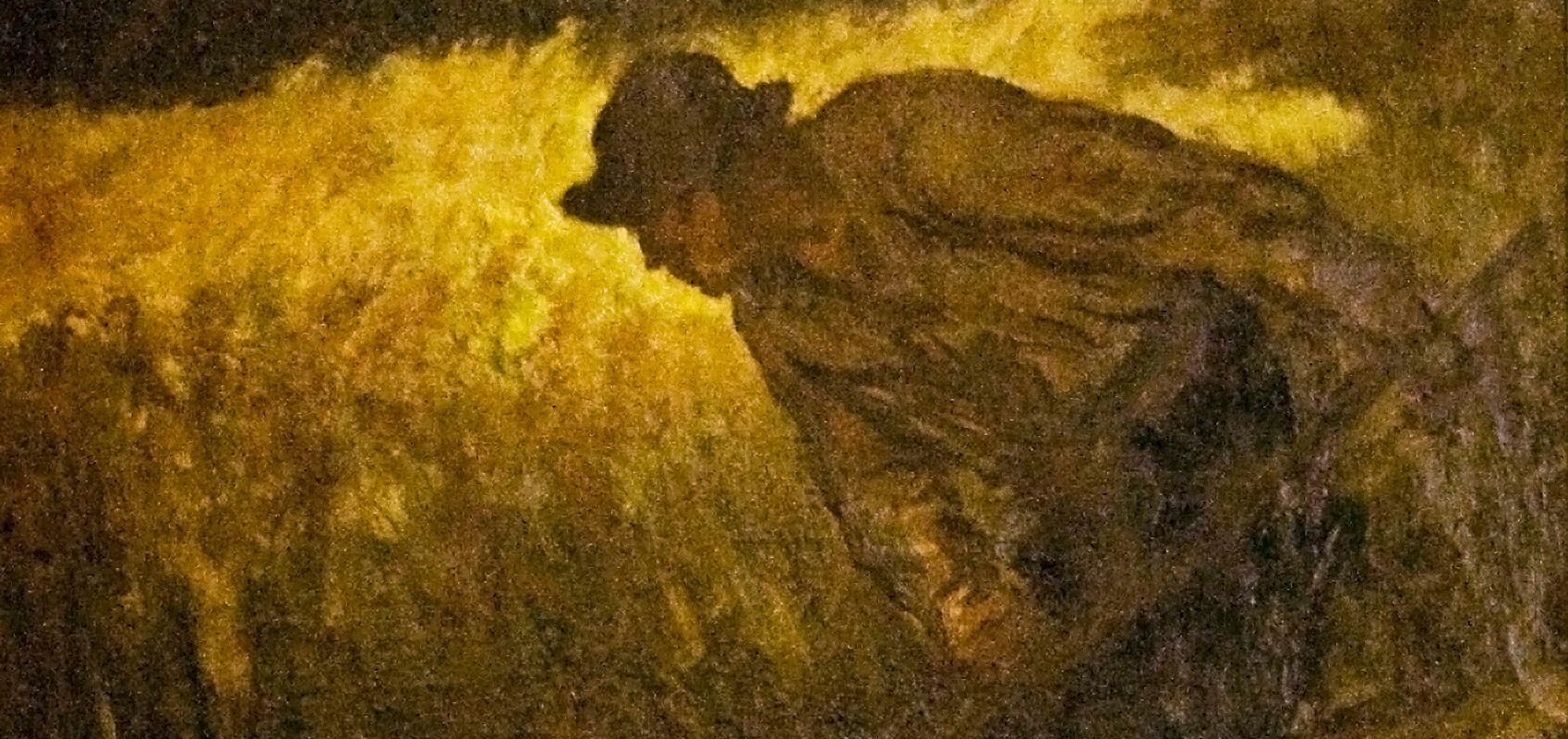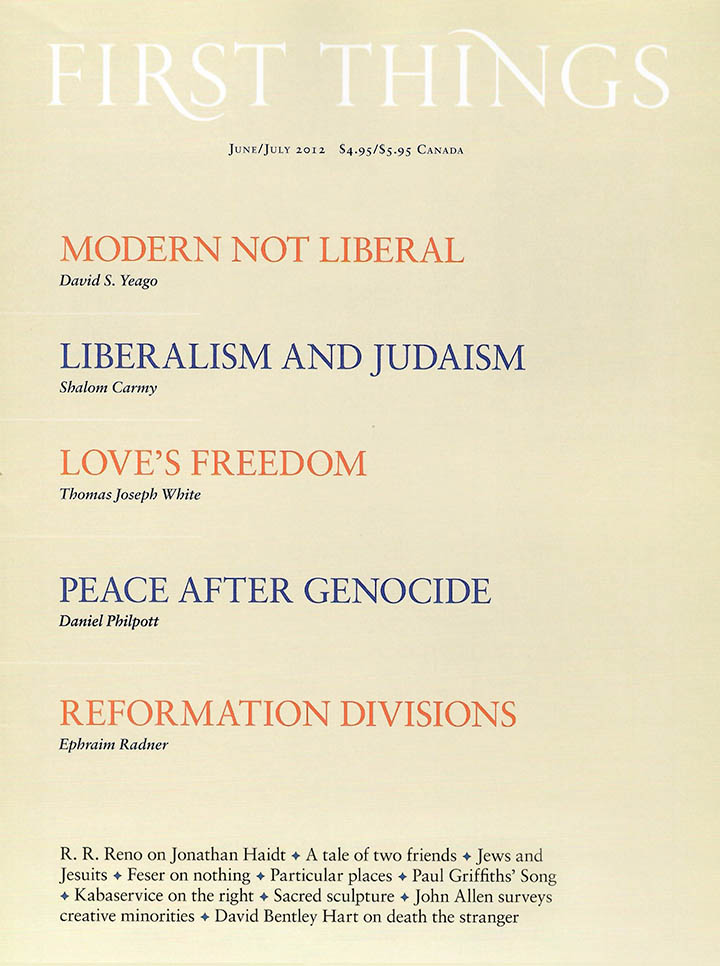
Damian Michael Bentley (1834-1897) was the first cousin of one of my great-grandfathers (if I were patient enough, I would work out what that makes my relation to him). He was also, as far as I can tell, the only confirmed metaphysical materialist dangling from any branch of my family tree. Then again, I would not know of his convictions had not both he and his daughter Norah been such punctilious diarists. So I should probably say simply that there is no trace of any other avowed atheist anywhere in the family archives.
He claimed, in fact, to have cast off faith in God when he was only eight—or, as he phrased it in a poem he wrote when he was twenty-three, “Though still a lad of tender years, unfledged,/ With manly strokes I breasted ev’ry wave,/ ’Til out the icy seas of childish faith,/ I reached the blessed shore of unbelief.” (Mercifully, he abandoned poetry not long after that.) And he clung fast to his atheism right up to his final days, and perhaps to the grave. In that respect, I suppose, he was a fairly conventional kind of nineteenth-century bien pensant. What set his atheism somewhat apart, however, was its inseparable alloy of enthusiastic morbidity.
If there is one great theme running through his literary remains, such as they are, it is an almost romantic fixation upon death as “our dearest friend, how often cruelly spurned” (another of his youthful forays into verse). It was to this strangely tender passion that he attributed his lifelong interest in taxidermy, which he described as a “palpation and contemplation of the mysterious essence of life, which is but inert matter accidentally arranged into organic machines, now reduced to its original and true lifelessness.” For many years, he considered becoming a mortician, before finally following his father into dentistry. In 1876, he founded what he called the “Maryland chapter” (though there was only the one) of the Society of Death Our Friend, an organization dedicated to weaning men and women from their fear of death, and teaching them to love it instead as “the balm and nectar of oblivion,” a “sweet release from carnal torments,” and the “healing sleep of eternity.” At its apogee, the society boasted six members.
It is perhaps not entirely surprising, then, that during the last four weeks or so of his life, as he lay abed cosseting his failing heart, Damian came to believe that he was being visited daily by death personified. There was nothing else alarming about his state of mind: He showed no signs of dementia, ran no fevers, and was fully conscious while the sun was up. He merely insisted that each day, between breakfast and lunch, Death dropped by for a brief conversation, usually seated in a cushioned window seat, listlessly swinging a foot back and forth above the carpet. He appeared not in the form of the tall, cowled, skeletal specter of lore, scythe in hand, but as a dapper, unimposing, slightly plump man of pallid complexion “with hints of olive about the eyes,” always dressed in a charcoal-gray morning suit.
As reported by Norah (who, to her father’s dismay, remained faithful to her mother’s high-church Episcopalianism), the conversations were anything but enlightening. Far from revealing anything of moment to Damian, Death generally liked to chat about such matters as the weather, or recipes for oyster pie, or recent advances in dental technology. Not only would he not confirm for Damian that consciousness dies with the body, he tended to deflect all such questions with a slightly stertorous sigh of boredom. In the end, Damian found his visitor anything but amiable. “Father spoke to Death again today,” Norah wrote on the eve of Damian’s demise. “He says he feels no real kinship with the fellow and now doubts whether he really knows Death at all. He declares himself much disappointed.”
I suppose, to keep my grimly literalistic editor happy, I have to admit that this is not, strictly speaking, a true story. I like to think, however, that it has a sort of higher, metaphorical truthfulness about it. It came to me as I was reviewing Lucien Lévy-Bruhl’s classic 1922 study La Mentalité Primitive, which I think was the first anthropological treatise to note that “primitive” societies often find it impossible to conceive of death as a natural phenomenon. Since then, many anthropologists have written about tribal societies scattered throughout the world that genuinely believe that death is always unnatural, and that were it not for the operations of various malevolent unseen agencies, employing poisons or magic or some other discreet weaponry, some lives might continue on indefinitely. In those societies, every death is assumed to be a kind of murder.
When I used to tell this to my students, they often responded with indulgent mirth: What, after all, can one expect from peoples who know nothing about modern physics or organic chemistry? I tried, however, to discourage the reaction. In fact, I did my best to convince them that this supposedly “primitive” intuition is, in a very profound sense, quite correct, and follows from an insight into the conditions of human experience far subtler than our culture (whose most taxing spiritual labor is watching television) could possibly generate. Death can never be truly “natural” for us, precisely because we are conscious of it, and so—quite unnaturally—it has a meaning for us, even if we think that meaning to be simply the end of all meaning.
True, we are as subject as any other animals to the circle of natural existence: the rise and fall of generations, the cycle of birth and death. But, as we are rational beings, endowed with reflective consciousness, our existence is not simply circular or organic, but also prospective and creative. To be human is to be open to the future, to a horizon of possibilities that cannot be contained within the limits of nature. We form plans, harbor expectations and ambitions, obey desires that far exceed the present moment; we are capable of novelty, imagination, resolve. When death comes, therefore, even late in life, it comes as the interruption of a story that might otherwise have continued to unfold—an anticipated guest, perhaps, but always arriving out of season. Death confirms us in our animal nature, but contradicts something essential to our humanity.
Now, obviously, one could just as well say that death “belongs” to our nature in a way that it cannot for any other animal, that only our consciousness of our finitude makes us capable of having stories to interrupt, that we alone enjoy the “privilege” of approaching our deaths with wills reconciled to its inevitability and expectations shaped by the limit it sets, and that our terrible knowledge of mortality gives shape and purpose to our lives. All of this, however, amounts only to another way of describing the same predicament: Our consciousness of death constitutes an absolute alienation from the rest of the natural world. Death torments us with the possibility of ultimate nothingness, and so awaits us as that final crisis that makes all life questionable. If not for this openness to the future that at once makes us conscious of our deaths and makes death an interruption of our lives, we would not be subject to either hope or despair, and would not exist in exile from the natural cycle of life and death. We might even be at peace.
Surely this is a very significant part of the explanation for the presence of sacrificial cult—of the classic do ut des variety—throughout most of human religious history. Contrary to the rather fatuous notion that “primitive” religion sprang from a pathetic need to pretend that death is not real, most ancient religions offered no comfort at all regarding life’s end; of death’s finality there was little doubt. What sacrifice accomplishes, however, is a reconciliation with death, a transformation of death into an occasion for overcoming that abnormality that estranges us from nature’s perennial cycles and burdens us with fear and grief. It allows human beings to participate directly in that endless round of feeding that sustains the cosmos. The Aztec priest feeding the sun with human blood, the Vedic priest feeding the ancestors with the sweet smoke of his oblations, and all sacrifices of this basic “alimentary” kind open a ritual path back into the circle of natural creation and destruction and allow human beings consciously to embrace death as part of a sacred mystery to which they too belong, and so to find temporary respite from their awareness of death as the ultimate contradiction.
Needless to say, it is in the end an impossible resolution to our dilemma. For us, there is no return to the savage peace of natural life and death; we would not be human if not for our spiritual exile from that sublime, interminable recurrence. No matter how tempting it may be to succumb to the “naturalistic” fallacy of believing otherwise, and no matter what “common sense” might tell us, a deeper spiritual wisdom within us knows who our last and most unnatural enemy is. As Damian learned to his chagrin (in his fabulous and metaphorical way, that is), we mortals can never forge a true friendship with the eternal stranger.

